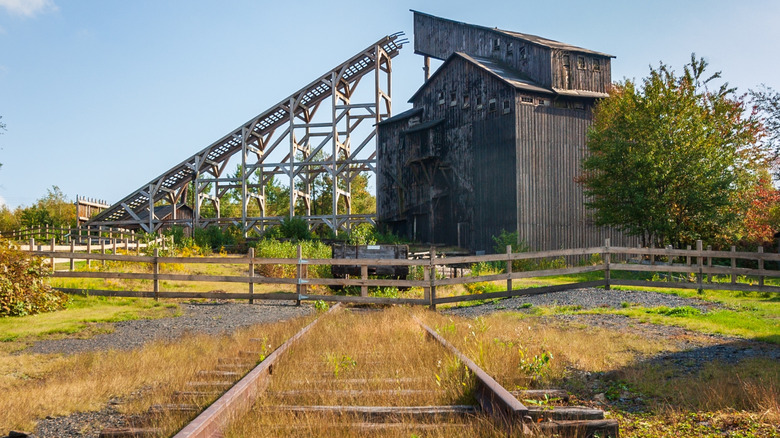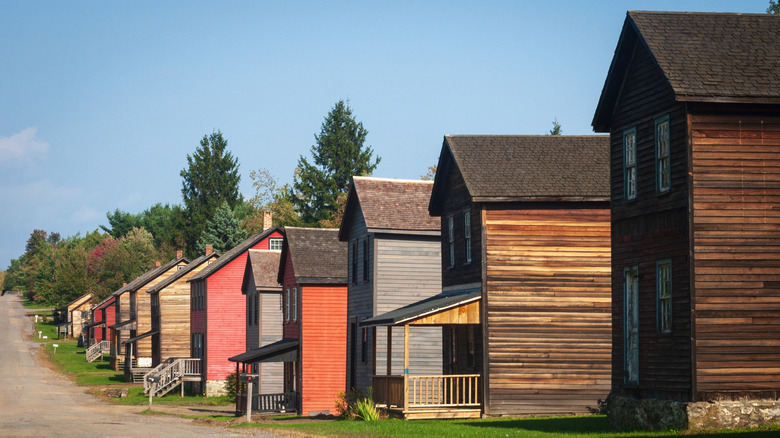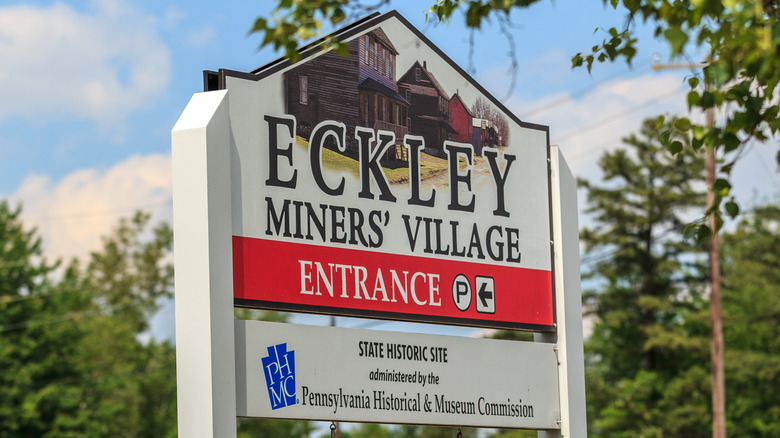America's 'Largest And Best-Preserved Anthracite Mining' Town Offers Timeless Charm In Pennsylvania
There are plenty of old and abandoned mining towns in the United States, such as Kennecott, the overlooked Alaskan ghost town turned National Historic Landmark. However, none are quite as large or as well maintained as Eckley Miners' Village. Mainly Museums describes it as the "largest and best-preserved anthracite mining community," and for good reason. Many of the buildings from the mining era are still standing, and most of the town hasn't changed since its active days, making the whole area a living museum. Eckley Miners' Village still has many classic town features, including old houses, a general store, and a doctor's office.
A bit of ambiguity surrounds Eckley Miners' Village, especially when trying to determine if it is still a town or not. People do live in Eckley, but they have to rent their homes from the Pennsylvania Historical and Museum Commission, and it is mostly the descendants of those who once lived and mined in the town.
The Eckley Miners' Village Museum is generally open from Wednesday to Sunday, 10 a.m. to 4 p.m. However, during the off-season, primarily in winter, it is only open on Saturdays and Sundays, though it still runs the same hours. Besides seeing the museum and enjoying tours of the town, visitors can attend events throughout the year, including talks about the food historically eaten in the area and lectures focused on the mining industry and the history as a whole.
What makes Eckley Miners' Village a history worth saving
Before Eckley Miners' Village, this Pennsylvania town was the site of a small community called Shingletown, home to residents who primarily used the nearby forest to make wood shingles. The village was on land owned by a man called Tench Coxe. However, in 1853, a few prospectors came to visit and found several veins of coal. When they presented their findings, the Tench Coxe Estate offered them a 20-year lease to mine on the land. Shingletown changed its name to Fillmore, but after a few years later, it was changed again to Eckley after Coxe's grandson, who was greatly involved in the mine and the village as a whole.
When the mining operation started, Eckley became a "patch town," also known as a company town. These are places that house workers and provide them with everything they need so they never have to leave. For example, in Eckley, homes, a church, stores, and schools were all present. There is a lot of debate on whether patch towns are a good idea or not, but it can't be denied that they were often convenient for both the employer and employees.
The whole town is historic, with buildings and homes dating back to 1854. The structures are interesting to see, as they were all gradually built from the middle of the 19th century to halfway through the 20th. One of the newest buildings is the company store, rebuilt in 1968.
What to know before visiting Eckley Miners' Village
Eckley Miners' Village is a little out of the way. While you can get to it via I-80, I-81, or I-476, you will have to drive through state parks or other towns before making it to the village. However, driving is really the only way to get there. Lehigh Valley International Airport, near Allentown, is the closest airport and a little over an hour away. Harrisburg is also within driving distance from the town, about one and a half hours. Thankfully, there are a few hotels within 10 miles of the village, like the Hampton Inn or Holiday Inn Express in Hazelton, or the Holiday Inn Express or Mountain Laurel Resort in White Haven.
If you live or are going to school in West Chester, the underrated Pennsylvania college town bursting with youthful vibes and charm, you can easily make the trip to this mining village over the weekend. It's two hours away, making for a fun and relatively short road trip. It's also only an hour from Scranton, the city with one of America's lowest costs of living and a Pennsylvania gem of diverse dining and art, if you're looking for more to do on your adventure.
The best time to visit is during the summer. This is when the community offers guided tours, the museum is regularly open, and you get the best views of the area. Admission is relatively cheap at less than $10, offering experiences you don't want to miss.


